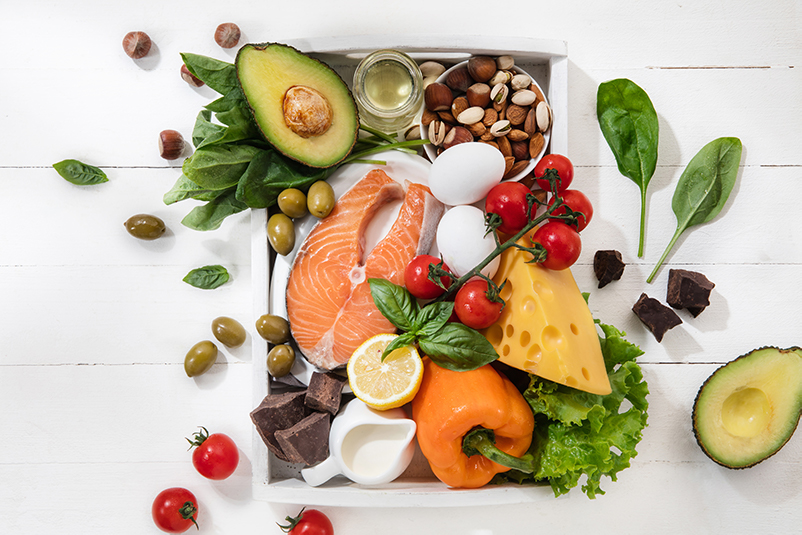One fad diet that is going viral among mainstream Weight Watchers is the low-fat diet. What is a low-fat diet?
A low-fat diet is a dietary alteration that looks to minimize the total amount of fat in your food. This type of diet is executed by removing all fatty content – saturated fat, animal fat, and dairy fat – from your meal.
One of the core objectives of creating a low-fat diet is to minimize the storage of fat in the body. This type of diet helps you to burn fat and lose weight. But how healthy is a low-fat diet? Will it give your body all the essential minerals and nutrients that it needs for proper functioning?
Most people think that adequate exercise helps in fat reduction. Although performing various physical activities can be helpful, fat reduction is also dependent on body composition. It is a perfect mixture of physical activities and a balanced diet to keep fit and reduce the storage of extra fat by the body.
An Introduction to a low-fat diet
A low-fat diet is a pattern of meals that is created to reduce the amount of fat that you get from your food. One basic rule about the low-fat diet is to keep only between 15 and 20% of fat calories. However, it is always best to speak with an accredited dietitian before you change your diet. As an eating plan, the low-fat diet comes with very low fat, cholesterol, and other unhealthy fat.
Everything you need to know about all the types of fat in your meal
Unhealthy fat should be limited
You should limit the amount of unhealthy fat that you consume. This type of diet has a high amount of trans fat, saturated fat, and cholesterol. They can all lead to unhealthy levels of cholesterol. When your cholesterol levels are in an unhealthy stage, you risk getting heart disease.
Cholesterol: You should restrict the total daily amount of cholesterol that you consume. This should be brought down to a daily dosage of below 200 mg every day. Cholesterol can be found in dairy, eggs, and meat.
Saturated fat: Saturated fat is contained in the total amount of calories you take per day. This fat should be brought down to below 7%. You should consult with your dietitian to inform you of your daily calorific needs. You can find saturated fat in palm oil, whole milk, ice cream, cheese, and butter. You can also find saturated fat in processed meats, chicken skin, pork, and beef. Processed meats include Bologna, hot dogs, and sausage.
Trans fats: To maintain a low-fat diet, it is important to avoid trans fat in any way possible. This is the type of fat that you find in baked and fried foods. Also, foods that are labelled trans-fat-free may still come with about 0.5 grams of trans fat in each serving.
Consume healthy fats
Rather than consume foods that have trans and saturated fat, they should be replaced with foods that have a high concentration of healthy fats. This is what helps you to reduce your high levels of cholesterol. The types of fat that you can consume include:
- Monounsaturated fats: Monounsaturated fats are the type of fats that are available in nuts, avocados, as well as vegetable oils like sunflower, canola, and olive oil.
- Polyunsaturated fats: Polyunsaturated fats are the type of fats that are available in vegetable oils like corn or soybean y. Another type of polyunsaturated fat is Omega-3 fats which are available in tuna, trout, herring, and salmon. You can also find Omega-3 fats in plant foods like canola oil, soybean, flax seed oil, and walnuts.
Low-fat diet: Type of food to avoid or limit
To stock to your low-fat diet, it is best if you avoided certain types of food. These include:
Grains: These include snacks that are made using partially hydrogenated oils like popcorn (butter-flavoured), regular crackers, and chips. These also include baked goods with highly fatty contents like pastries, cookies, pies, doughnuts, croissants, and biscuits.
Dairy: These include ice cream made by using whole milk, yoghurt, 2% milk, and whole milk. Other food elements to avoid include whipping cream, heavy cream, and half-and-half creamer.
Proteins and meats: These include meat cuts with high fatty content such as ribs, regular hamburgers, and T-bone steak. Others are fish, poultry (chicken and turkey), and fried meat. Further foods include cold cuts (Bologna or salami), sausage, bacon, and dogs. You should also avoid egg yolks and whole eggs.
Fruits and vegetables with fat added: These include vegetables in high-fat sauces or butter or fried vegetables like cheese sauces or cream. Others included fruits served with cream or butter and fried fruit. You should also avoid all types of gays such as shortening, stick margarine, and butter. Other types of foods include palm kernel oil, palm oil, and coconut oil.
Eating foods that are low in fat to lose weight
Eating foods that contain high amounts of fat can help you gain a lot of weight. However, to lose weight, you should eat foods that have low-fat content. In addition, you should pay attention to the amount of calories that you consume daily. The body always tends to store additional calories in the form of fat. Even if these fatty content are obtained through low-fat, fat-free, and trans-fat-free foods. For you to lose weight considerably, you should burn a higher level of calories than you consume. This can be achieved by increasing your level of physical activity (through exercising more) and consuming fewer calories and less fat.
Conclusion
A low-fat diet is great to help you minimize fat calories and lose excess weight. This type of meal comes with minimal fat. It helps you to avoid eating all forms of fat regardless of the source – animal fat, saturated fat, or fairy fat. It means that you will also avoid taking done of your favourite snacks or sugary foods like white bread, crackers, muffins, biscuits, rolls, and all types of packaged cookies or chips. A low-fat diet is a popular diet that helps to produce desired results in the short term.




